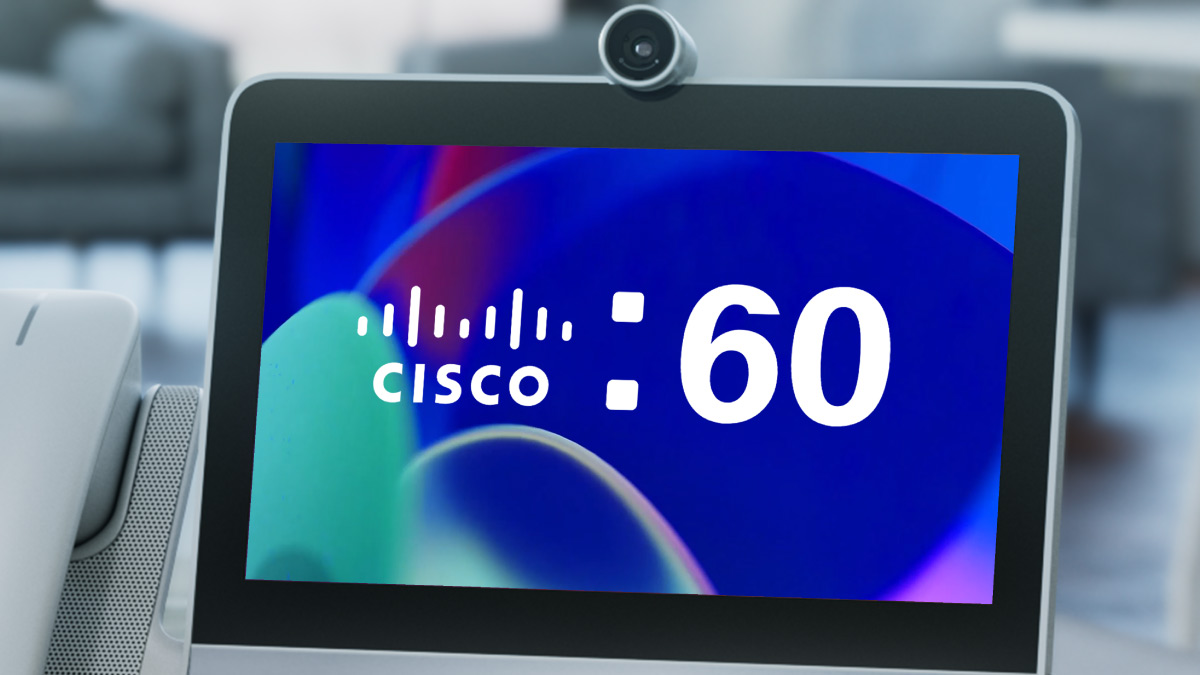Healthcare providers have had to make the quick transition to telemedicine due to the current COVID-19 crisis. While many people are sheltering-in-place, patients and providers are using collaboration tools like Cisco’s Webex to conduct a visit as if they were face-to-face. During this dynamic and unprecedented time when more people are staying at home, Cisco has seen massive jumps in usage—Webex has logged more than 8 billion meeting minutes since March 1st, and 17,000 healthcare organizations in 118 countries are using Cisco for their telehealth services right now.
A shift in mindset
In an industry roundtable on March 25th, Cisco SVP and Chief People Officer Francine Katsoudas spoke with the manager of a Bay Area hospital about the facility's implementation of Cisco Webex and how her team has been able to change the mindset of patients and providers from in-person visits to telehealth visits.
Despite working around the clock to provide healthcare to their community, a manager at a Bay Area hospital says that her team was able to quickly ramp up the Cisco collaboration technology so that providers could start telemedicine visits immediately.
“We’ve addressed this change to telehealth in three ways: people, process, and technology,” says the manager, “In the first week of March, we realized we had to scale our tech, so we added infrastructure to support way more virtual visits. Since then, we’ve had an unprecedented 2000 percent increase in our visits, which means we not only had to improve our tech, we had to refine our processes. We had to get a lot of volunteers and train them, because adding resources doesn’t help unless we get their skill level up. We basically took our providers and put them into our patient’s houses.”
Because patients have the freedom to see a doctor while they are in their own home, it means they can alleviate potential stressors that come with visiting healthcare institutions. The manager states that she thinks healthcare has and will continue to make the transition towards telemedicine.
“We’ve heard from lots of patients– they tell us they’re grateful to not drive for hours, that their child doesn’t have to go through physical and mental stress. He’s at home, comfortable, talking to the doctor, able to get the care he needs,” says the manager, “We’ve introduced a digital transformation. And we are changing the mindset of people of providing healthcare by telehealth.”
What keeps the information at the hospital safe is something crucial that distinguishes Cisco’s tools from the rest—Webex security. Webex has encryption for data at transit and at rest, plus options for end-to-end encryption. This protects patients’ healthcare information, making sure that no one can access the telehealth sessions.
Technology aids on the front lines
Prior to the changing landscape of COVID-19, telecommunications were being used at healthcare institutions across the U.S. to provide instant and life-saving connectivity.
In downtown Charlottesville, Virginia, the University of Virginia Health System faced a crisis: a mass violence emergency had just occurred and the Health System only had seconds to respond.
“From the front lines where the patients were injured to the command center, and throughout our institution, we relied on telecommunications to guide us in the triage and management in that situation,” says UVA Health System Director of Emergency Management Tom Berry, “In the command center, we were using Cisco technologies to monitor the circumstances downtown.”
When lives are on the line, every second is a factor. Instant communication allows real-time information to pass from the incident to the emergency department. 20 lives were saved that day due in part to instant and simplified communications.
See also: Committing $225 million to global COVID-19 response
St. Louis-based Mercy Virtual also uses Cisco collaboration tools to reach patients via video conferencing. Mercy’s Virtual Care Center uses Cisco Unified Contact Center Enterprise, which helps employees provide services like “Nurse on Call”—Mercy’s 24/7 way of helping patients access help and a caregiver over the phone.
“We want everything to flow just like if they had walked into the doctor’s office,” says Mercy Virtual clinical manager Nancy Rikard, “Except the patient has the advantage of being in their own home.”
With Cisco’s tools, Mercy has saved 43 seconds per call from locating patient records, and has seen an average speed to answer reduce to 30 seconds or less.
More organizations are making the change to telehealth and virtual visits. Once the mindset has shifted towards telemedicine, providers may be practicing and patients may be looked after all at home. The ways in which we work are changing, as well as our behaviors and ideas around how we get care.
###
We welcome the re-use, republication, and distribution of "The Network" content. Please credit us with the following information: Used with the permission of http://thenetwork.cisco.com/.




